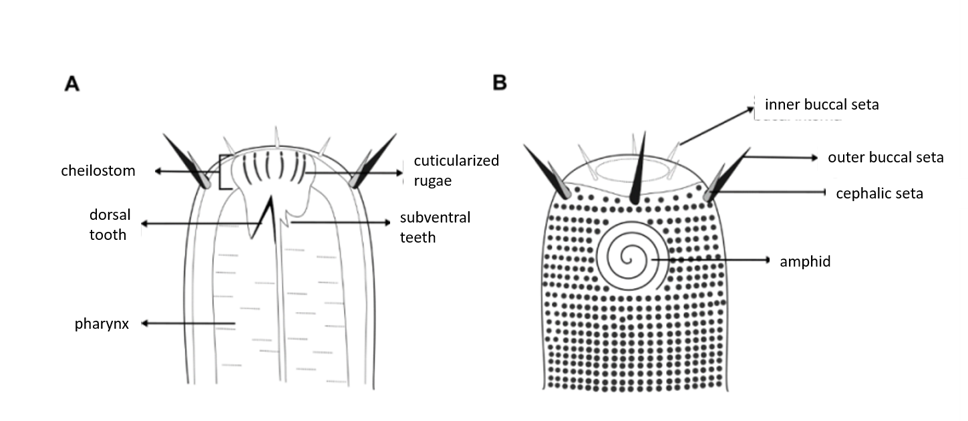
Revised 06/05/25
Chromadorina
Chromadoroidea
Cyatholaimidae Filipjev, 1918 (also sometimes attributed to Micoletsky, 1922)
 |
| Cyatholaimidae: anterior features. Drawings from Cunha, 2023 |
Five subfamilies, generally differentiated by arrangement of anterior sensilla, armament of the stoma, form of the cuticular ornamentation, presence or absence of pre-cloacal supplements and general morphology:
Cyatholaiminae Filipjev, 1918
Nyctonematinae Bussau, 1993
Paracanthonchinae Deconinck, 1965
Pomponematinae Gerlach & Riemann, 1973
Xenocyatholaiminae Gerlach & Riemann, 1973
As concluded by Cunha (2023) most genera in the family Cyatholaimidae genera lack sufficient information about synapomorphic characters. The family is possibly non-monophyletic. The definition of genus and species, and even of the subfamilies, are based on combinations of multiple characters that are not informative from a phylogenetic standpoint.
Bongers, T. De Nematoden van Nederland.
Cunha, B.R. 2023. Diversity of Free-living Marine nematodes: Taxonomy and Syatematic of Family Cyatholaimidae. PhD Thesis, University of Campinas, Brazil
Datta, T.K., Miljutin, D.M., Chakraborty, S.M. Mohapatra, A. 2016. Cyathoshiva amaleshi gen. n. sp. n. (Nematoda: Cyatholaimidae) from the coast of India. Zootaxa 4126:577-586.
Goodey, T and J.B. Goodey, 1963. Soil and Freshwater Nematodes. Methuen. London